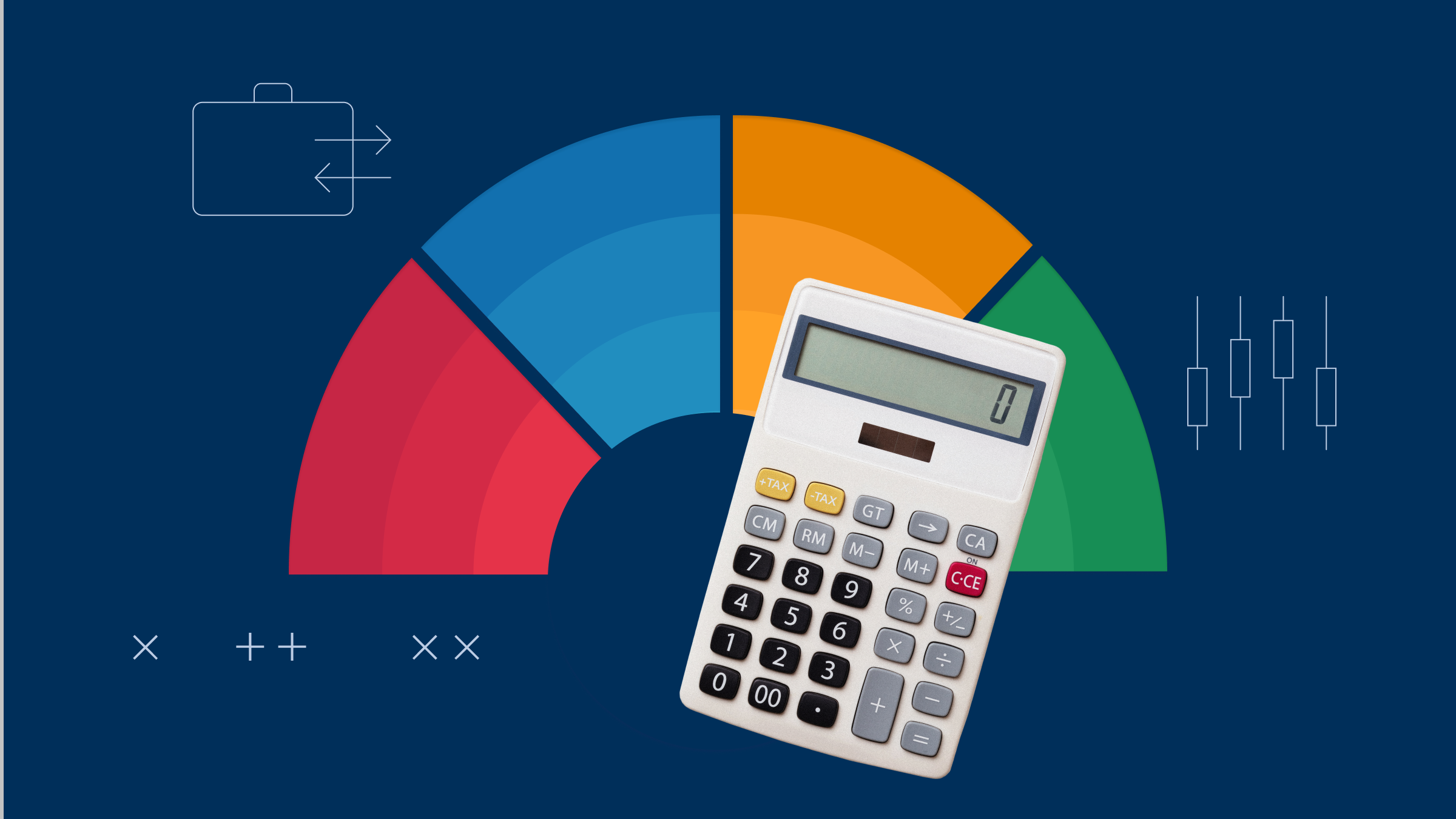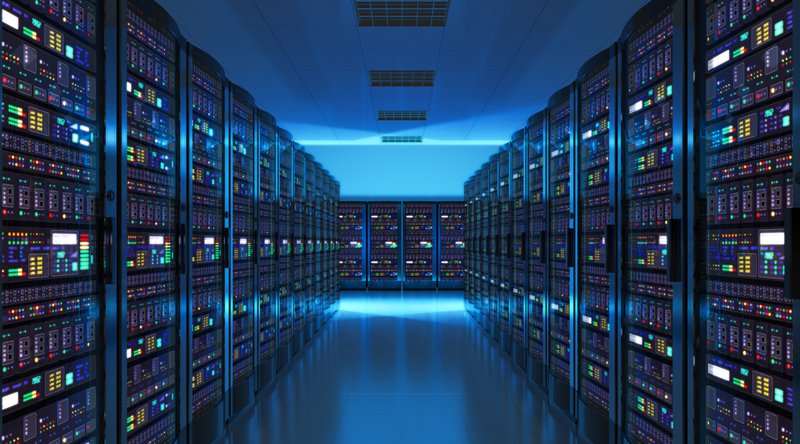Mining Hardware Investment Guide for Cryptocurrency
Alex Thompson

The hardware landscape for cryptocurrency mining continues to evolve rapidly, presenting both opportunities and challenges for investors. As we navigate through 2025, making informed decisions about mining equipment has become increasingly complex, with considerations spanning efficiency metrics, capital expenditure, expected lifespan, and resale value. This comprehensive guide examines the current state of mining hardware across different categories, providing investors with actionable insights for optimizing their hardware portfolios.
The Current State of Mining Hardware
The mining hardware ecosystem has matured significantly, with clear segmentation between different mining approaches and their corresponding equipment requirements.
"We've reached a point where mining hardware selection has become highly specialized by cryptocurrency," explains Alex Thompson, hardware analyst at MinerSet. "The days of general-purpose mining equipment are largely behind us, with optimization now occurring at the algorithm-specific level."
Key Trends Shaping Hardware Development
Several overarching trends are influencing the evolution of mining hardware in 2025:
Efficiency Improvements
While the pace of efficiency gains has moderated compared to earlier years, manufacturers continue to deliver incremental improvements with each generation:
- ASIC Miners: 15-20% efficiency improvements per generation
- GPU Mining: 10-15% improvements in mining-specific performance per generation
- Cooling Technology: Significant advances in heat management enabling higher sustained performance
Specialization
Hardware is increasingly optimized for specific algorithms and mining approaches:
- Algorithm-Specific ASICs: Tailored designs for SHA-256, Scrypt, Equihash, and other algorithms
- GPU Firmware Optimization: Custom firmware enhancing performance for particular mining applications
- Hybrid Approaches: Specialized components combining aspects of different hardware categories
Sustainability Focus
Environmental considerations are increasingly influencing hardware design:
- Power Efficiency: Primary focus of R&D efforts across all hardware categories
- Heat Recycling: Built-in capabilities for capturing and repurposing waste heat
- Component Longevity: Design improvements extending useful equipment life

ASIC Mining Hardware Analysis
Application-Specific Integrated Circuit (ASIC) miners represent the most specialized tier of mining hardware, offering maximum performance for specific algorithms but with limited flexibility.
Bitcoin (SHA-256) ASIC Miners
Bitcoin mining remains dominated by SHA-256 ASIC miners, with several manufacturers competing in this mature market segment.
Top-Performing Models
| Model | Hashrate | Power Consumption | Efficiency | Approximate Cost |
|---|---|---|---|---|
| Bitmain Antminer S21 Pro | 200 TH/s | 4,400W | 22 J/TH | $9,800 |
| MicroBT Whatsminer M50S+ | 190 TH/s | 3,800W | 20 J/TH | $11,200 |
| Canaan Avalon A1366 | 180 TH/s | 3,600W | 20 J/TH | $8,900 |
| iPollo B2 | 210 TH/s | 4,200W | 20 J/TH | $12,500 |
"The efficiency race in Bitcoin ASICs has largely plateaued," notes Thompson. "We're seeing smaller incremental improvements with each generation, suggesting we're approaching theoretical limits of the current semiconductor technology."
Investment Considerations
When evaluating Bitcoin ASIC investments, several factors beyond raw specifications deserve consideration:
- Reliability: Established manufacturers typically offer more reliable units with lower failure rates
- Warranty Terms: Coverage periods range from 6-12 months, with significant variations in service quality
- Cooling Requirements: Higher-end units require sophisticated cooling solutions, adding to total cost of ownership
- Firmware Flexibility: Some manufacturers offer more customization options for optimizing performance
- Resale Value: Premium brands typically retain value better in secondary markets
Scrypt ASIC Miners (Litecoin/Dogecoin)
Scrypt algorithm miners enable mining of Litecoin, Dogecoin (through merged mining), and other compatible cryptocurrencies.
Top-Performing Models
| Model | Hashrate | Power Consumption | Efficiency | Approximate Cost |
|---|---|---|---|---|
| Bitmain Antminer L7 | 9.5 GH/s | 3,425W | 0.36 J/MH | $6,500 |
| iBeLink BM-K1+ | 15 GH/s | 2,400W | 0.16 J/MH | $9,800 |
| Goldshell LT6 | 3.35 GH/s | 2,800W | 0.84 J/MH | $3,200 |
| FusionSilicon X7+ | 1.48 GH/s | 1,300W | 0.88 J/MH | $1,800 |
"Scrypt mining economics benefit significantly from the ability to simultaneously mine Litecoin and Dogecoin," explains Thompson. "This merged mining capability creates a natural hedge against price volatility in either coin."
Other Algorithm-Specific ASICs
Several other algorithms have dedicated ASIC hardware available, though with smaller market sizes:
- Equihash ASICs: Used for Zcash and related cryptocurrencies
- X11 ASICs: Primarily for Dash mining
- Ethash ASICs: Though Ethereum has transitioned to Proof-of-Stake, these units can mine Ethereum Classic
- Handshake ASICs: Specialized for the Handshake naming protocol
"The viability of these specialized ASICs depends heavily on the continued relevance and market capitalization of their target cryptocurrencies," cautions Thompson. "Investors should carefully assess the long-term prospects of smaller networks before committing to algorithm-specific hardware."
The Digital Mining Alternative
While traditional ASIC miners offer powerful performance, they come with significant barriers to entry including high upfront costs, technical complexity, and ongoing maintenance requirements. For investors seeking exposure to mining economics without these challenges, platforms like MinerCards offer an innovative alternative.
MinerCards provides digital miners that allow anyone to participate in cryptocurrency mining without purchasing physical hardware. Starting at just $5, these digital miners offer:
- Zero Hardware Management: No need to purchase, set up, or maintain physical equipment
- No Technical Expertise Required: Simple, user-friendly platform accessible to all investors
- Automatic Operation: Mining rewards generated and delivered without technical intervention
- Minimal Entry Cost: Start mining with as little as $5, compared to thousands for physical ASICs

GPU Mining Hardware Analysis
Graphics Processing Units (GPUs) offer greater flexibility than ASICs, allowing miners to switch between different algorithms and cryptocurrencies as profitability shifts.
Current GPU Mining Landscape
Following Ethereum's transition to Proof-of-Stake, GPU mining has undergone significant realignment, with hashrate redistributing across alternative networks.
Top-Performing GPUs for Mining
| Model | Algorithm | Hashrate | Power Consumption | Efficiency | Approximate Cost |
|---|---|---|---|---|---|
| NVIDIA RTX 4090 | KAWPOW (Ravencoin) | 80 MH/s | 320W | 4.0 W/MH | $1,600 |
| AMD Radeon RX 7900 XTX | Autolykos v2 (Ergo) | 470 MH/s | 300W | 0.64 W/MH | $1,000 |
| NVIDIA RTX 4080 | ZelHash (Flux) | 110 Sol/s | 260W | 2.36 W/Sol | $1,200 |
| AMD Radeon RX 7800 XT | KAWPOW (Ravencoin) | 45 MH/s | 230W | 5.1 W/MH | $550 |
"GPU mining now requires more active management than in previous years," notes Thompson. "Profitability can shift rapidly between different algorithms, requiring miners to reconfigure their operations accordingly."
Investment Considerations
GPU mining investments involve several unique considerations compared to ASICs:
- Flexibility: Ability to mine different algorithms provides adaptability as market conditions change
- Resale Market: Stronger secondary market with demand from both miners and gamers
- Cooling Complexity: Requires more sophisticated cooling solutions for dense multi-GPU setups
- Power Management: Benefits significantly from undervolting and custom power profiles
- Dual Purposing: Potential for alternative use cases during mining downtime (rendering, AI training)
GPU Mining Rigs and Infrastructure
Beyond the GPUs themselves, successful mining operations require carefully designed supporting infrastructure:
Mining Frames and Cooling
Purpose-built mining frames have evolved significantly, with features including:
- Open-Air Designs: Maximizing natural airflow around components
- Modular Expansion: Allowing gradual scaling of operations
- Integrated Monitoring: Built-in temperature and performance tracking
- Noise Mitigation: Designs reducing acoustic footprint for residential deployments
Power Supply Considerations
Power delivery represents a critical component of GPU mining setups:
- Efficiency Ratings: Platinum and Titanium rated PSUs delivering 92%+ efficiency
- Redundancy Options: Dual PSU configurations providing failover protection
- Wattage Headroom: Typically 20-30% capacity above maximum theoretical draw
- Cable Management: Specialized solutions for high-density GPU deployments
"The supporting infrastructure often represents 30-40% of total investment in GPU mining operations," explains Thompson. "Underinvesting in these components typically leads to reliability issues and reduced equipment lifespan."
Emerging Mining Hardware Technologies
Several innovative approaches are beginning to impact the mining hardware landscape in 2025:
Immersion Cooling Systems
Immersion cooling, where mining hardware operates submerged in dielectric fluid, has transitioned from experimental to mainstream:
- Efficiency Benefits: Typically delivers 25-30% improvement in performance/watt
- Density Advantages: Allows significantly higher mining density per square foot
- Noise Reduction: Near-silent operation compared to air-cooled alternatives
- Equipment Longevity: Reduced thermal stress extending hardware lifespan
"Immersion cooling has reached the crossover point where the efficiency gains justify the additional upfront investment," notes Thompson. "For operations above a certain scale, it's becoming the default approach."
FPGA Mining Resurgence
Field-Programmable Gate Arrays (FPGAs) are experiencing renewed interest for specific applications:
- Algorithm Agility: Reprogrammable to optimize for different mining algorithms
- Efficiency Potential: Can achieve ASIC-like efficiency for certain algorithms
- Early Access Advantage: Ability to optimize for new algorithms before ASICs become available
- Development Complexity: Requires specialized programming expertise
"FPGAs occupy an interesting middle ground between ASICs and GPUs," explains Thompson. "They're finding a niche with sophisticated miners who can leverage their programmability to exploit temporary profitability windows."
Integrated Mining Solutions
Turnkey mining solutions combining hardware, software, and management tools are gaining traction:
- Containerized Deployments: Complete mining operations in shipping container form factors
- Remote Management Platforms: Comprehensive monitoring and optimization tools
- Predictive Maintenance: AI-driven systems anticipating hardware failures
- Automated Algorithm Switching: Dynamic optimization based on profitability calculations
"These integrated solutions are lowering the technical barriers to entry for institutional investors," notes Thompson. "They're enabling capital to enter the mining space without requiring deep operational expertise."
Digital Mining Platforms
Perhaps the most revolutionary development in the mining landscape is the emergence of digital mining platforms like MinerCards, which eliminate the need for physical hardware entirely:
- Fractional Mining Exposure: Purchase proportional shares of mining operations
- Professional Management: Mining facilities operated by experienced teams
- Transparent Performance: Real-time tracking of mining rewards and performance
- Automatic Payouts: Regular rewards delivered directly to your wallet or bank account

ROI Analysis and Investment Strategy
When evaluating mining hardware investments, several analytical frameworks can inform decision-making:
Total Cost of Ownership (TCO)
Beyond the initial hardware purchase, comprehensive TCO analysis should include:
- Electricity Costs: Typically 70-80% of ongoing operational expenses
- Cooling Requirements: Additional power and equipment for heat management
- Maintenance Expenses: Replacement parts and technical support
- Facility Costs: Physical space, security, and infrastructure
- Insurance Premiums: Coverage for equipment damage and business interruption
Payback Period Calculation
While simple payback calculations (equipment cost divided by daily profit) provide a starting point, sophisticated investors incorporate additional factors:
- Difficulty Increases: Historical data suggests 15-30% annual difficulty growth for established networks
- Price Volatility: Scenario analysis across different price projections
- Efficiency Degradation: Performance decline due to component aging and dust accumulation
- Opportunity Cost: Comparison against alternative cryptocurrency investments
"The most common mistake in mining investment analysis is failing to account for difficulty increases," cautions Thompson. "Static profitability calculations invariably lead to overly optimistic projections."
Strategic Hardware Portfolio Construction
Rather than focusing exclusively on current profitability, sophisticated mining investors construct diversified hardware portfolios:
Tiered Deployment Strategy
- Tier 1: Latest generation equipment in optimal facilities (30-40% of portfolio)
- Tier 2: Previous generation equipment in standard facilities (40-50% of portfolio)
- Tier 3: Older equipment deployed opportunistically during favorable conditions (10-20% of portfolio)
- Digital Mining: Allocation to platforms like MinerCards for exposure without operational complexity
Geographical Diversification
- Power Cost Arbitrage: Deploying in regions with lowest sustainable electricity costs
- Regulatory Hedging: Distributing operations across multiple regulatory environments
- Climate Optimization: Leveraging natural cooling in appropriate regions
Technology Diversification
- ASIC/GPU Balance: Maintaining exposure to both specialized and flexible mining approaches
- Algorithm Distribution: Mining multiple cryptocurrencies to mitigate network-specific risks
- Experimental Allocation: Small positions in emerging technologies and approaches
- Digital Mining Integration: Including digital mining platforms for accessibility and convenience
"The most resilient mining operations maintain diversity across hardware types, locations, and target cryptocurrencies," explains Thompson. "This approach sacrifices some theoretical maximum return in exchange for significantly reduced risk."
Future Outlook for Mining Hardware
Several trends are likely to shape the evolution of mining hardware through 2025 and beyond:
Semiconductor Fabrication Advances
The mining hardware industry continues to benefit from broader advances in semiconductor technology:
- Node Size Reductions: Gradual transition to more advanced fabrication processes
- Specialized Architectures: Increasingly customized designs for specific mining algorithms
- Supply Chain Diversification: Expansion beyond traditional manufacturing hubs
Sustainability Innovations
Environmental considerations are driving significant innovation:
- Renewable Integration: Hardware designed specifically for variable power environments
- Heat Recovery Systems: More sophisticated approaches to capturing and utilizing waste heat
- Component Recyclability: Design approaches facilitating end-of-life material recovery
Decentralization Pressures
Concerns about mining centralization are influencing hardware development:
- Home Mining Solutions: More accessible equipment designed for residential deployment
- Noise Reduction Technology: Addressing a key barrier to residential mining
- Distributed Validation Alternatives: Hybrid approaches combining aspects of mining and staking
- Digital Mining Democratization: Platforms like MinerCards making mining accessible to everyone
Conclusion: Strategic Hardware Investment
Mining hardware investment in 2025 requires a more sophisticated approach than in previous years, with success depending on careful analysis, strategic planning, and operational excellence.
"The mining industry has transitioned from a gold rush mentality to a mature industrial approach," concludes Thompson. "Today's successful mining investors treat hardware as a strategic asset class, applying the same rigorous analysis they would to any significant capital expenditure."
For investors considering mining hardware allocations, several principles should guide decision-making:
- Focus on TCO: Consider all costs associated with deployment and operation
- Plan for Obsolescence: Account for the limited useful life of mining equipment
- Maintain Flexibility: Design operations to adapt to changing market conditions
- Prioritize Efficiency: Recognize that power consumption typically determines long-term viability
- Consider Scale Requirements: Acknowledge the increasing importance of economies of scale
However, for those seeking exposure to mining economics without the complexity and capital requirements of traditional hardware, digital mining platforms like MinerCards offer a compelling alternative. With digital miners starting at just $5, automated USDT payments, and a transparent platform backed by verified data centers, MinerCards has made cryptocurrency mining accessible to everyone.
By approaching mining investment with appropriate diligence and strategic thinking, investors can continue to find attractive opportunities in this maturing sector of the cryptocurrency ecosystem. Whether through traditional hardware deployment or innovative digital mining platforms like MinerCards, there are now options available for investors of all levels to participate in the cryptocurrency mining economy.
Beyond Physical Hardware: Digital Mining Alternatives
For investors deterred by the complexity and cost of physical mining hardware, digital mining platforms present an alternative worth considering. MinerCards has pioneered a hardware-free approach to mining, allowing investors to purchase digital miners that generate daily rewards without the maintenance concerns of physical equipment. This option may be particularly appealing for those seeking mining exposure with minimal technical requirements.
References
- Thompson, A. (2025). Comparing ASIC Crypto Mining: Evaluating GPU, FPGA and Emerging Hardware Solutions. MinerSet. Retrieved from https://minerset.com/comparing-asic-crypto-mining-evaluating-gpu-fpga-and-emerging-hardware-solutions/
- Global Mining Hardware Report. (2025). Annual Mining Equipment Analysis. Retrieved from https://www.mininginsights.org/hardware-report-2025
- Cryptocurrency Mining Association. (2025). Hardware Efficiency Standards. Retrieved from https://www.cryptomining.org/standards/efficiency-2025
- Immersion Systems International. (2025). Comparative Analysis of Cooling Technologies. Retrieved from https://www.immersionsystems.com/research/cooling-comparison-2025
- Semiconductor Industry Association. (2025). Fabrication Advances in Mining Hardware. Retrieved from https://www.semiconductors.org/reports/mining-hardware-2025
- MinerCards. (2025). Digital Miners with Daily Rewards. Retrieved from https://minercards.com/
